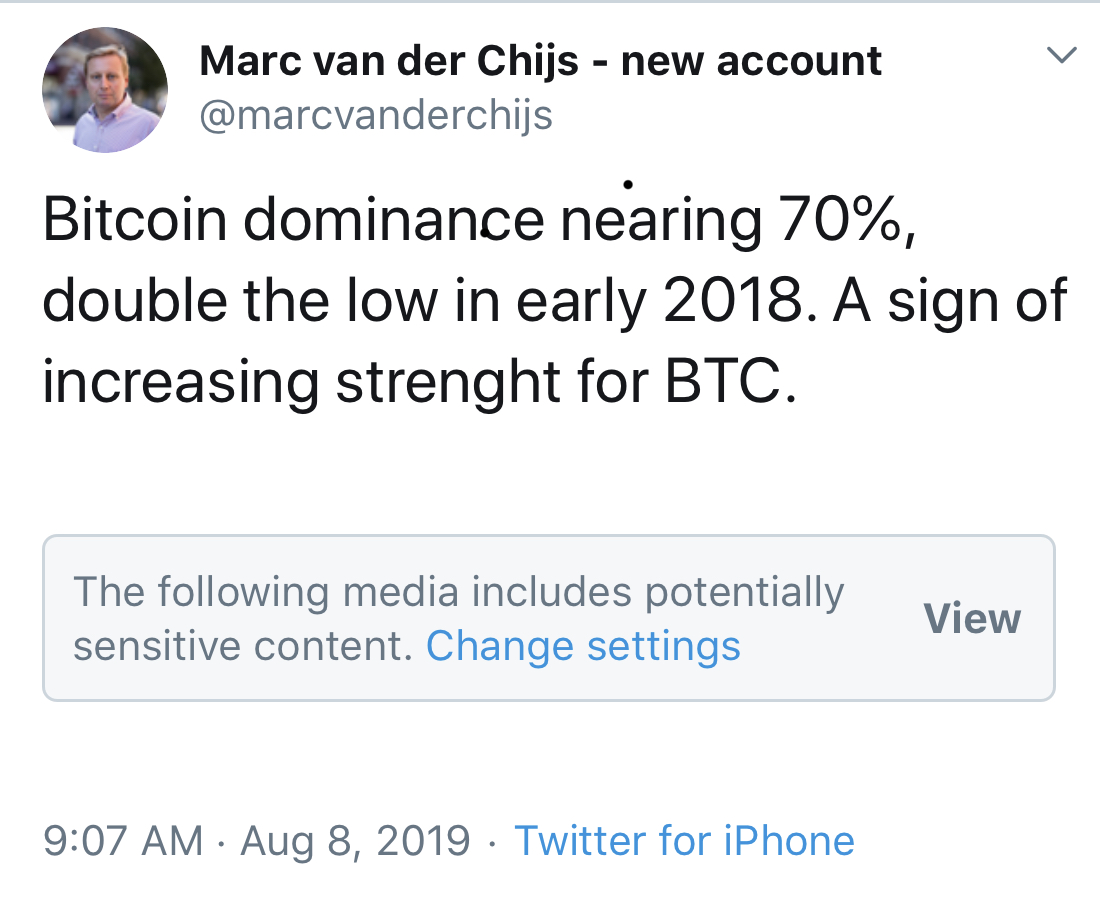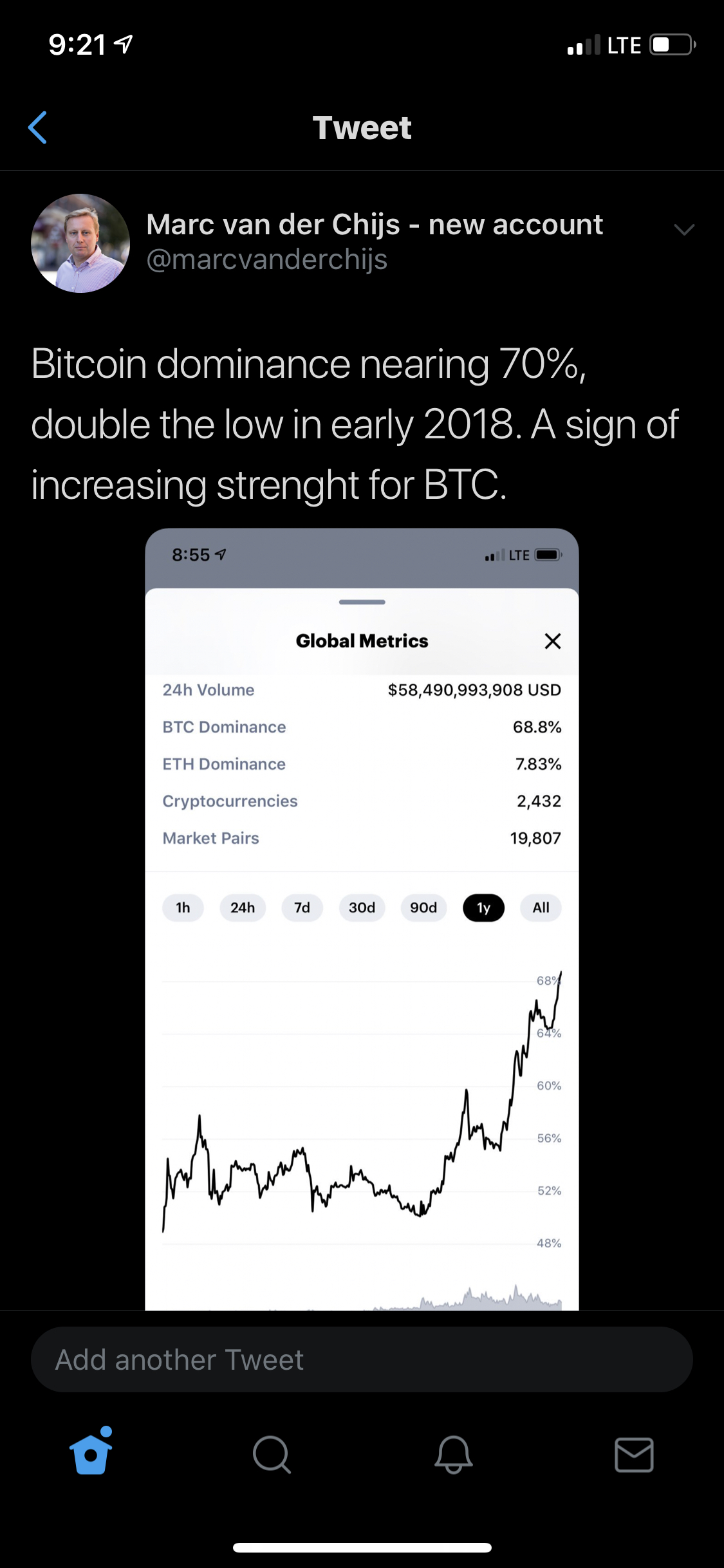About 2 years ago my Twitter account suddenly started behaving strangely. If you searched on Twitter for my name the account did not show up and when I posted links to other sites my followers got the message that the tweet contained potentially sensitive information. My number of followers suddenly stopped growing and even went down a bit.
I did not understand what was going on, but after doing some research I realized that my account was flagged by Twitter for containing sensitive content (there is a setting that was marked by Twitter and I could not turn it off). My assumption was that it was likely related to me writing about Bitcoin and other crypto-related topics or because of my criticism of Trump. I also assumed this would be a temporary thing, so although I found it annoying I did not think about it too much. However, after a couple of weeks nothing had changed, so I decided to get in touch with Twitter.
Well, I won’t go into too many details, but it’s impossible to get in touch with anybody at Twitter. The company does not reply to emails, it does not reply to tweets and there is no phone number or chat option available. There is an online tool to report a problem, but it only has limited selections and I was not able to report my problem there (I tried, but also never got a reply). Eventually I got in touch with the former country manager of Twitter in the Netherlands who I happened to know. He put me in touch with some people in Paris, but also there I never got a reply. Very disappointing, and it says something about the culture at Twitter: users are not important.
At the same time I started digging deeper into why my account could have been censored. I don’t know for sure, but a short while before the semi-ban started I remember having an online discussion with a Republican state senator who was (obviously) very much pro-Trump. I have no patience for supposedly smart people who still support the con man in the White House (I can’t blame the average Joe for voting for Trump, simply because most people just don’t realize they get conned – but that’s a different story). I don’t think the discussion was out of line and I remember blocking the senator after our Twitter exchange, but maybe he used his political connections to silence me? I don’t know, but I would not be surprised. Twitter never told me why it happened, I still have not heard anything from them.
Because of this I finally decided to stop using my old account (@chijs) and go back to another Twitter account that I had not used for 10 years (@marcvanderchijs). A few weeks ago I made the change and went from almost 15,000 followers on my old account to less than 100 followers on my new one. I am over 1000 followers now on the new one, but conversations are not as interesting yet as they were on my old account. I had to manually follow most of the people that I had followed on my old account. There did not seem to be a tool for that so I semi-automated it by exporting my followers to an Excel sheet and then re-adding them with 2 clicks from there. Of course Twitter does not like you to add a lot of people quickly, so I was stopped from doing that a few times as well, but most of the people I followed I now follow on the new account as well.
What I learned from this is that centralized social media companies do not work. You can’t build a brand on a communications platform if they can all of a sudden start censoring you. Worse, you don’t even know why they do so and to top it off you have no way to get in touch with them. I am pretty disappointed in Twitter, to me it’s clear that their staff does not care about its users. Because of this I have been looking at decentralized versions of Twitter (Gab.ai is one of the companies that I like). It’s hard to disrupt Twitter, but I believe it may eventually happen when they censor too many users or just plainly refuse to communicate.
The only reason I stayed on Twitter and started all over again is because it’s still one of my main sources of news. I learn new things on Twitter every day and tweets often inspire me and give me new ideas. That’s the power of Twitter and that’s what gives it its value. But it’s also a big media company that does not care about its users, actively censors people that have different opinions, and in the end only thinks about its bottom line. I hope a new decentralized, immutable (not for profit?) initiative will emerge that might be even better than Twitter.
If you don’t follow me on my new account yet go here and click the follow button. Thanks!



